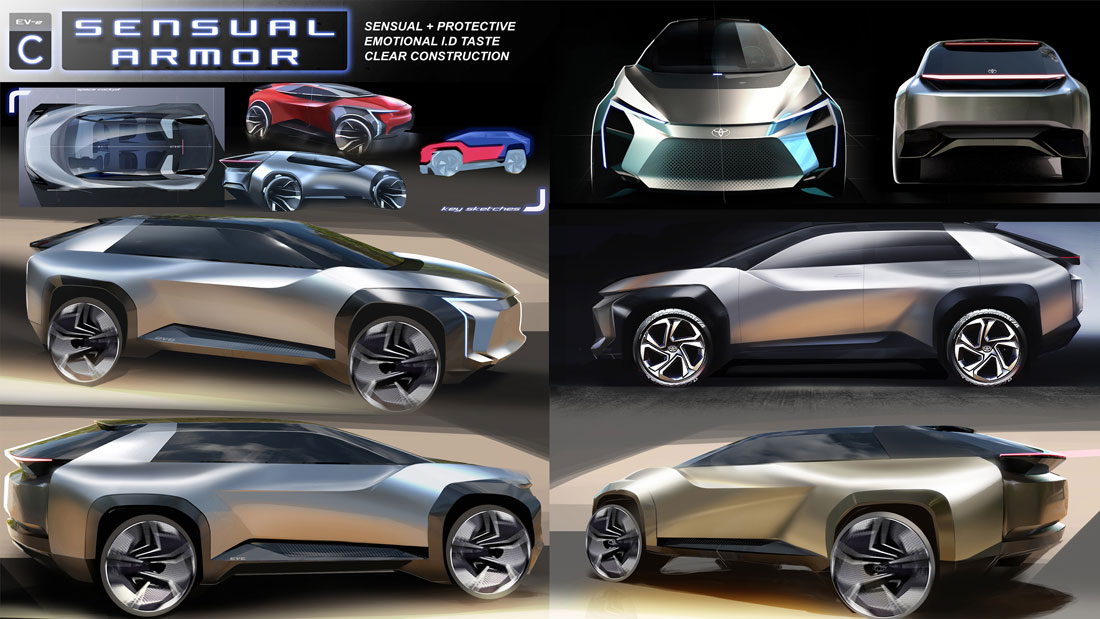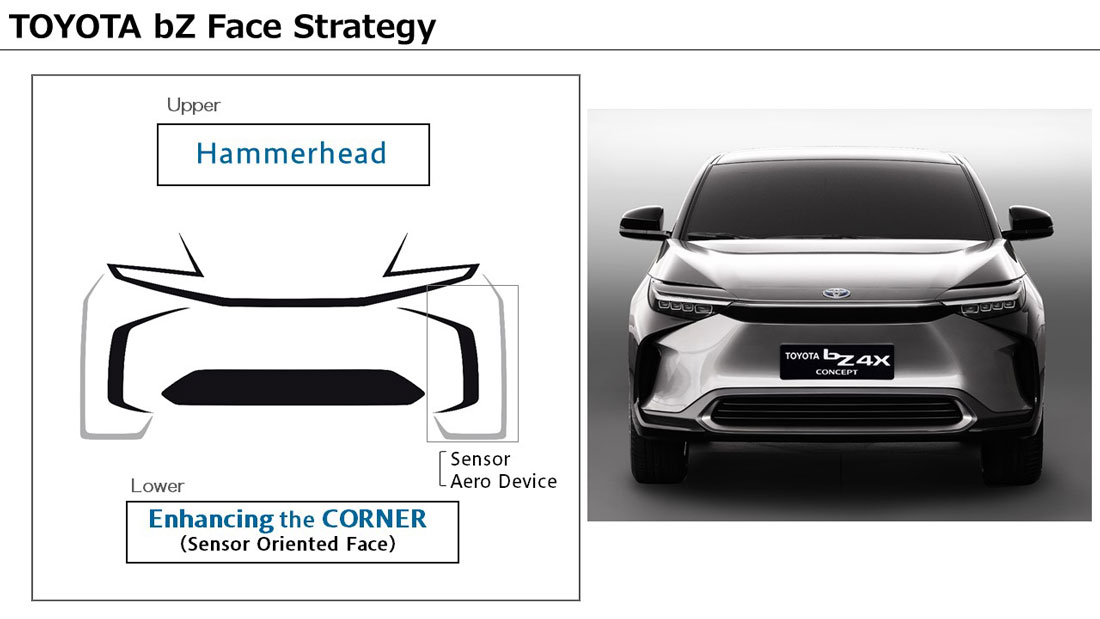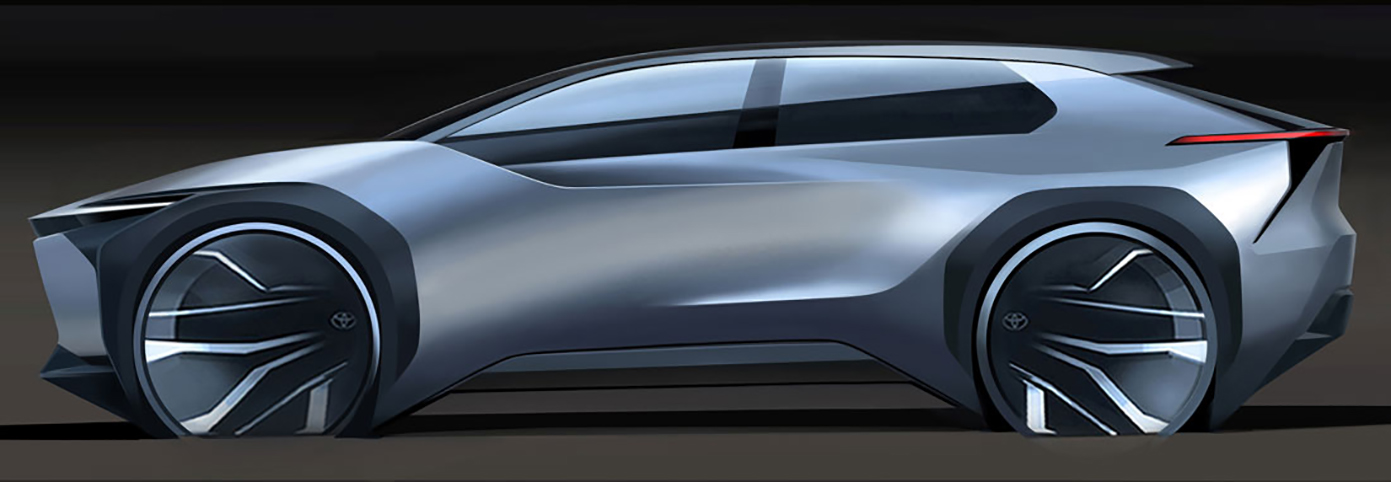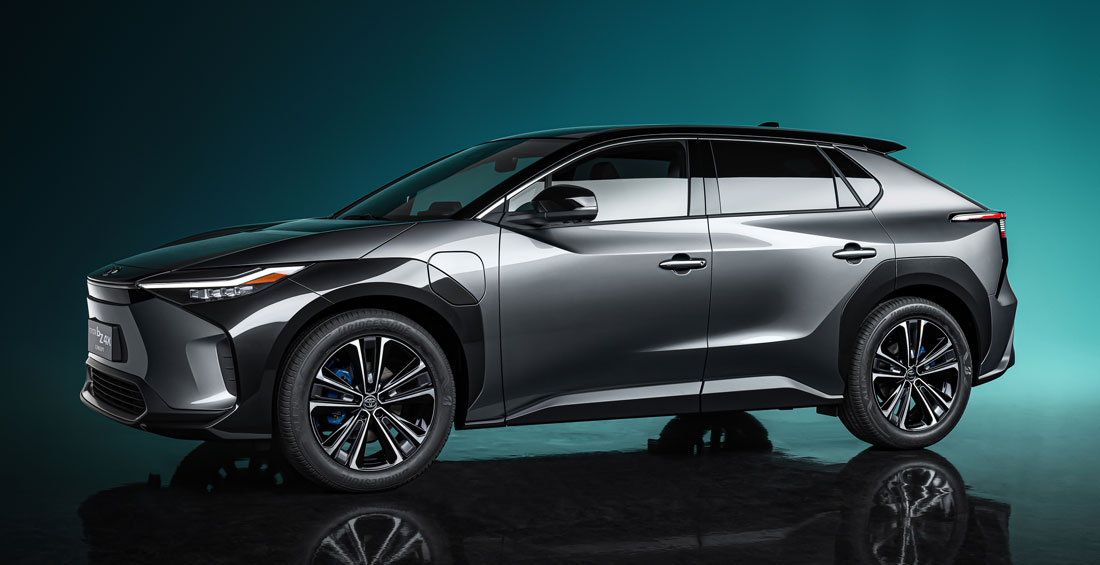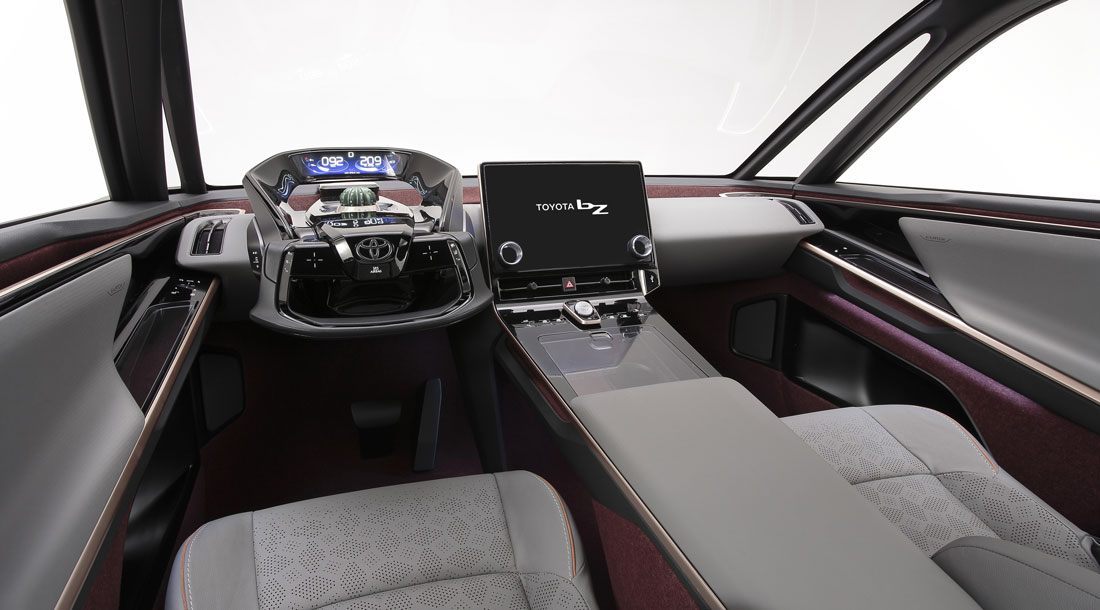At a certain point in the conversation, Simon Humphries, head of Global Design at Toyota and Lexus, suddenly stops talking, reflects for a moment and makes the following remark: “When we started designing, after years dedicated to excellence in hybrids, the critical point was that we were clearly not the first to develop a purely electric car. However, this concern led us to focus more than ever on the needs of the user, starting with the human element. So the initial limitation was turned into an advantage.”
This explains, frankly and simply, the vision around which the bZ4X is structured: the first proposal in an ambitious zero-emissions plan that will generate seven models named Beyond Zero (bZ) before 2025. The formal framework is, of course, not unrelated to the functional and genuinely efficiency-oriented conception of the world’s largest manufacturer: “For Toyota, each car must remain focused on its own values. We try to make the best product in the segment, responding to specific needs each time, rather than sticking to a homogeneous, all-embracing brand character”.
There is no need to specify, therefore, that the entry into an unprecedented field was accompanied by an all-round exploration of its expressive possibilities. “We involved all our style centres around the world, with very varied results”, explains Humphries. “In China, the focus was on space, because families are large and multi-generational; the US came up with a sporty concept somewhere between a sedan and an SUV; Europe came up with a sort of compact minivan; and Japan came up with a small city car the size of a Yaris but with much more versatile interiors”.
After careful analysis, the decision was made to invest in a crossover with similar dimensions to the RAV4, designed for the most part at the European Design Development centre in Nice and engineered in Japan, with the legitimate aim of winning over as many customers as possible. “The specific e-TNGA platform has made it possible to make the most of the car’s dimensions, maximising the wheelbase and optimising the layout of the passenger compartment floor to generate a number of centimetres worthy of the flagship Lexus LS”, says Katsuhiro Suzuki, product chief designer of the bZ4X.
“But the entire concept of reception has actually been revolutionised: from the largely fabric-covered dashboard to the unobtrusive, raised instrumentation, a direct consequence of the important work carried out on the steering wheel”. This is where one of the most powerful innovations to appear in production in recent years is revealed: “Thanks to the steer-by-wire system that eliminates physical connections with the wheels, the control is physically smaller and is operated with much less movement, thus making it possible to overturn the driving position’s layout”.
Everything seems to have been modified, not in terms of a disruptive scenic effect, but of a more concrete and intelligent usability, the aesthetics of which are merely a reflection. And the bodywork? “The nose required an in-depth study”, says Humphries. “By abandoning the scheme defined by the radiator, in fact, we risked ending up with a ‘faceless’ car. We solved the problem by playing on the angles, highlighted by air intakes, tension lines and the surprising use of black profiles around the front wheel arches, which also interact with the headlights that have been downsized and enriched with painted inserts. These are not just graphic devices, but as a whole they create a new volume composition”.
(Full article in A&D no. 250)


